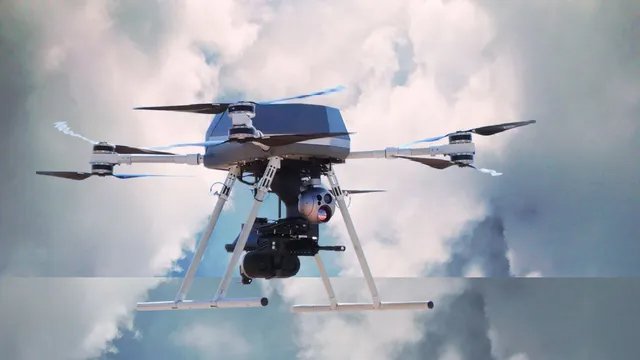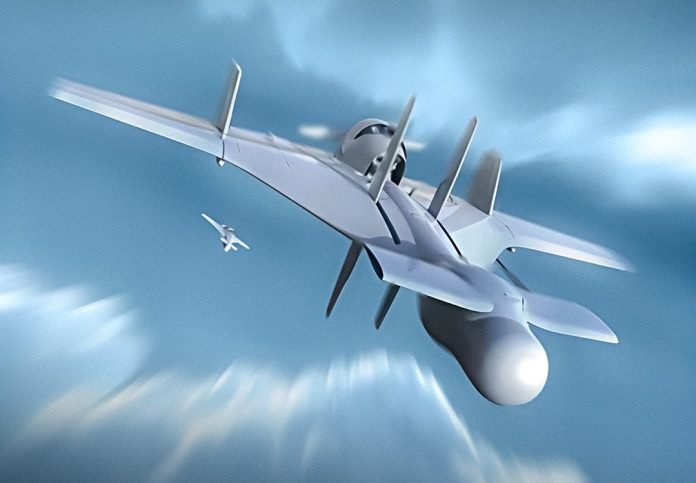The strategic implications for the region, sophistication, and scope of the recent drone clashes between India and Pakistan during Operation Sindoor have garnered significant attention. Pakistan deployed hundreds of drones, including Baykar and Asisguard models of Turkish origin, in coordinated swarms to target Indian military installations along the Western Front during these encounters. The drones were employed for a variety of purposes, including loitering, probing air defenses, and conducting suicide attacks. India’s response was robust, as it employed a combination of indigenous systems, such as the DRDO’s D4S, and foreign technology from France, Russia, and Israel to intercept and neutralise most of these drones. India also responded by using its own drones to target Pakistani air defence facilities, which reportedly destroyed at least one radar installation. This rapid escalation signified a transition from conventional cross-border skirmishes to large-scale unmanned aerial warfare.
Parallels to Russia-Ukraine and Other Conflicts
The drone conflicts between India and Pakistan are strikingly similar to the strategies and technologies employed in the Russia-Ukraine war and other recent conflicts. The drones have become an essential component of military operations in both scenarios, serving as loitering munitions, precision assaults, and surveillance tools. The normalisation of drone warfare, particularly between two nuclear-armed states, is a significant development that mirrors the extensive use of drones in the Middle East, Ukraine, and by non-state actors such as the Houthis. The use of drone swarms by Pakistan to probe and saturate Indian air defences is directly comparable to the strategies employed by Russia and Ukraine, which employ swarms to confuse and overwhelm adversary systems. The constant tactical evolution observed between Russia and Ukraine is mirrored in India’s layered counter-drone response, which employs electronic warfare, kinetic interceptors, and retaliatory drone strikes.
The normalisation of drone warfare, particularly between two nuclear-armed states, is a significant development that mirrors the extensive use of drones in the Middle East, Ukraine, and by non-state actors such as the Houthis
The international nature of the hardware involved is another notable parallel. Pakistan’s use of Turkish drones, already deployed in Azerbaijan and Ukraine, underscores the global proliferation of unmanned systems and the influence of foreign suppliers in regional conflicts. This is indicative of the patterns observed in Ukraine, where Turkish, Iranian, and Western drones have played critical roles. The use of drones also introduces new escalation risks, as their remote operation and the challenge of attribution can obscure lines of responsibility and lower the threshold for conflict. This trend has been observed in Ukraine and other hotspots such as the Red Sea.
Turkish Drones vs. Indian Drones
Turkish drones have not fared well against well-armed militaries like India and Russia. The Turkish Bayraktar TB2 and other models have been extensively employed in numerous conflict zones, such as Syria, Libya, Nagorno-Karabakh, and Ukraine. In certain theaters, such as the 2020 Nagorno-Karabakh conflict, Turkish drones were credited with assisting Azerbaijan in achieving substantial battlefield victories against Armenian forces. This was primarily due to the absence of effective countermeasures at the time. Another factor is that the Turkish drones were used after the Israeli drones had neutralised the targets.
Nevertheless, the narrative has been more complex in Ukraine and Syria. Initially, Turkish drones were able to accomplish some tactical successes against Syrian regime targets in Syria. However, these successes were short-lived as Syrian and Russian air defences adapted, resulting in increased drone losses. Similarly, Bayraktar TB2 drones in Ukraine gained attention early in the conflict for their ability to strike Russian convoys and artillery. However, the effectiveness of these drones experienced a significant decline as Russian forces enhanced their electronic warfare and air defense strategies. By mid-2023, open-source reports and battlefield footage suggested that the operational impact of numerous Turkish drones was being restricted as a result of their downing or jamming.
The Indian Air Force and Army employed a combination of long-range drones, loitering munitions, and guided munitions to execute precision strikes on high-value Pakistani targets, such as radar and missile facilities. These strikes were highly effective, as Indian drones successfully destroyed critical assets at major airbases such as Noor Khan and Rahimyar Khan by bypassing and jamming Pakistan’s Chinese-supplied air defence systems
Pakistan’s use of Turkish drones during the most recent India-Pakistan conflict was consistent with the above-mentioned engagements. The drone threat was effectively neutralised by the Indian air defences, which were equipped with a combination of sophisticated imported and indigenous systems. In environments with limited air defence, Turkish drones can be effective; however, their utility is drastically lowered when faced with well-equipped and prepared adversaries. This result is consistent with the broader trend.
The Indian Air Force and Army employed a combination of long-range drones, loitering munitions, and guided munitions to execute precision strikes on high-value Pakistani targets, such as radar and missile facilities. These strikes were highly effective, as Indian drones successfully destroyed critical assets at major airbases such as Noor Khan and Rahimyar Khan by bypassing and jamming Pakistan’s Chinese-supplied air defence systems. The effectiveness of India’s surveillance, planning, and delivery systems was underscored by the Ministry of Defence, which emphasised that all Indian strikes were executed without any loss of assets.

Differences and Unique Aspects
Despite these similarities, the India-Pakistan conflicts are characterised by significant distinctions and distinctive characteristics. The South Asian conflict is noteworthy for being the first between two nuclear-armed neighbours to feature such extensive drone combat, although the scope of drone use in Ukraine is larger and more sustained. The effectiveness of Indian air defences against the Turkish drones used by Pakistan may be attributed to the deployment of less sophisticated drone models and India’s strong indigenous countermeasures. In contrast to the protracted nature of the Russia-Ukraine war, which has seen limited success through mediation, the conflict also experienced rapid international mediation, with the United States reportedly brokering an armistice shortly after the escalation.
The India-Pakistan conflicts are characterised by significant distinctions and distinctive characteristics. The South Asian conflict is noteworthy for being the first between two nuclear-armed neighbours to feature such extensive drone combat, although the scope of drone use in Ukraine is larger and more sustained
In Conclusion
In summary, the recent drone conflict between India and Pakistan has had a substantial impact on the military dynamics of South Asia, elevating unmanned aerial warfare to the forefront of direct hostilities between two nuclear-armed nations. The operational outcomes of each side’s drone fleet were significantly different, although both countries employed drones for surveillance, loitering munitions, and precision strikes, a trend observed in the Russia-Ukraine war and other conflicts.
The Indian drones, as well as the Israeli-origin Harop loitering munitions and other indigenous systems, exhibited a distinct technological and tactical advantage over the Turkish-origin drones used by Pakistan. Indian drones successfully penetrated and targeted Pakistani air defence installations, reportedly destroying high-value assets at key bases such as Lahore and Rahimyar Khan, all without any loss of Indian assets. This success can be attributed to the advanced features of the drones themselves, such as high-altitude operation, resistance to interference, and precision strike capability, as well as the sophistication of India’s surveillance, planning, and delivery systems.
The writer is the Publisher of Frontier India and the author of the book Foxtrot to Arihant: The Story of Indian Navy’s Submarine Arm.






